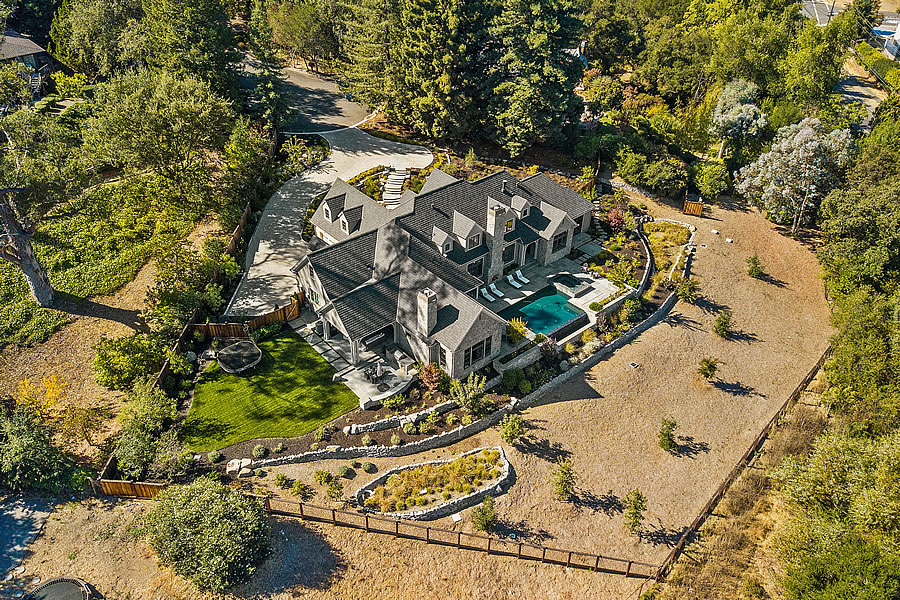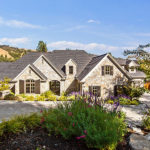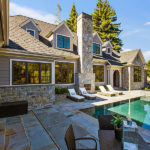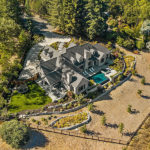As we outlined this past July:
Designed by Alan Page and built on a nearly one-acre lot “in the heart of Lafayette’s sought–after Happy Valley,” the roughly 6,000-square-foot home at 22 Toledo Court boasts “elite craftsmanship, state-of-the-art technology, elegant lines and quality finishes throughout,” with an infinity-edge pool, outdoor fireplace and a covered loggia adjacent to its outdoor kitchen with a built-in barbeque, refrigerator and views of the surrounding hills.
Listed as a “once in a lifetime opportunity,” with a $6.595 million price tag in the second quarter of 2017, the brand new 5-bedroom home sold for $6.3 million that June.
And having returned to the market priced at $6.195 million this past April, the list price for 22 Toledo Court has just been reduced to $5.895 million, a sale at which would represent market depreciation of 6.4 percent for the luxury home over the past two years on an apples-to-apples basis (while the median sale price in Lafayette is up).
Further reduced to $5.795 million in September, the sale of 22 Toledo Court has just closed escrow with a contract price of $5.525 million, down a total of 12.3 percent ($775,000) over the past two years on an apples-to-apples basis while the “median sale price” in Lafayette is up.













This is a good example of a “bad” investment in June, 2017, rather than an indication of Lafayette real estate prices. Add commissions, cost to carry, taxes to the $775,000 and one can conclude that the previous owner took a bath.
Keep in mind that said “bad investment” became a comp for other transactions in the second half of 2017.
This is an important point.
On the way up, we hear, “prices are set in the margin,” and each new higher comp becomes the new benchmark. On the way down, we hear, “the property was poorly staged,” or “that’s not the real San Francisco.”
Why is that?
(rhetorical question)
Or my favorite excuse: “the seller obviously overpaid when they purchased this.” And the comment above, “the previous owner took a bath” is just a slightly different version of this.
This property – well, Lafayette generally – is square in the middle of the blackout zone; assuming, as some fear, this becomes the “new normal”, I’m wondering how it will affect house prices. For people laying out several million$, it’s probably a (relatively) small thing to set up some kind of backup power source: perhaps such will become a selling point for hill area properties …all around the Bay Area.
Blackouts won’t be a nuisance for long. There are several technical solutions to reduce their frequency and impact. However I’d be more worried about the increased intensity and occurrence of wildfires in places like this that abut rural land. There the best solutions are to cool the climate, something that is politically difficult.
Yes, as you brought up in the first post in July; the blackouts are an addendum – of sorts – to that.
(And to anticipate a trifecta, I wouldn’t be surprised if there isn’t landslide risk here as well)
I think you’re right. The summers are only going to get longer and hotter and the fires are only going to get worse.
I wonder how much tree trimming those executive golden parachutes would have paid for
Nearby Orinda is pretty much gang turf now. Could this have something to do with depreciation?
Ewwww! It looks like it was flown here from Frisco, Texas.
It’s hard to believe an architect designed this high-end McMansion. Embarrassing. Really!
It’s not the worst Mc Mansion I have ever seen, but honestly…and is there really gang activity nearby?
Well sure…in the same way Hunter’s Point is “nearby” to Pacific Heights. (Well maybe not the same: the latter is actually recurrent)
no. Orinda remains a very nice suburb despite the anomalous Halloween Airbnb disaster, which I’d expect to be banned soon.
UPDATE: A “Once in a Lifetime Opportunity,” Take Two/Three